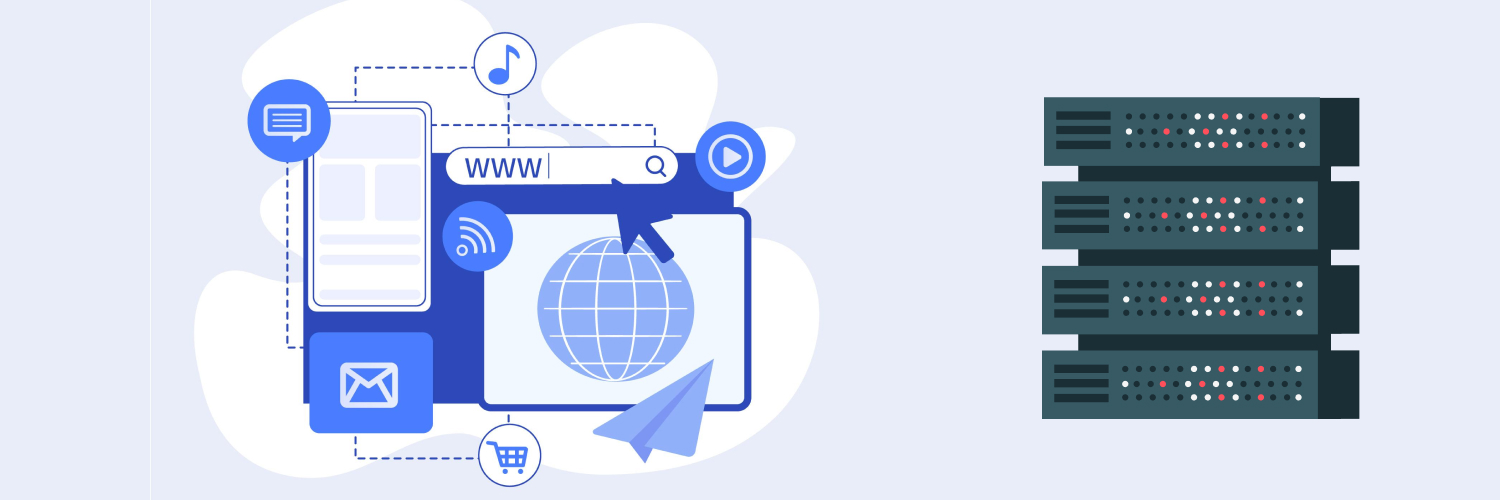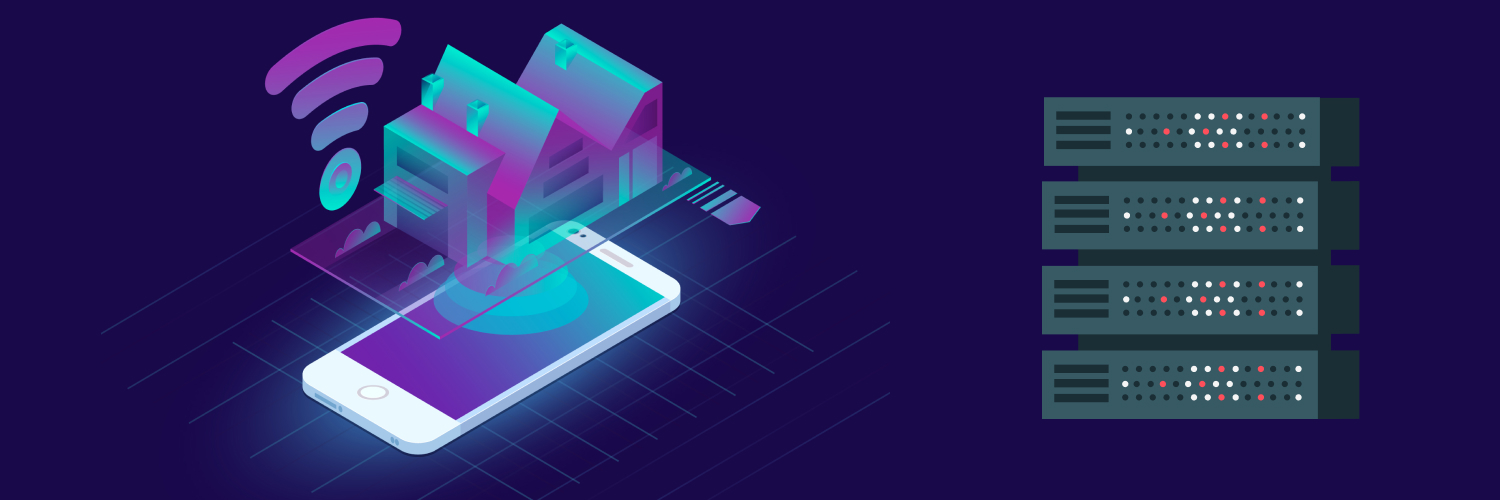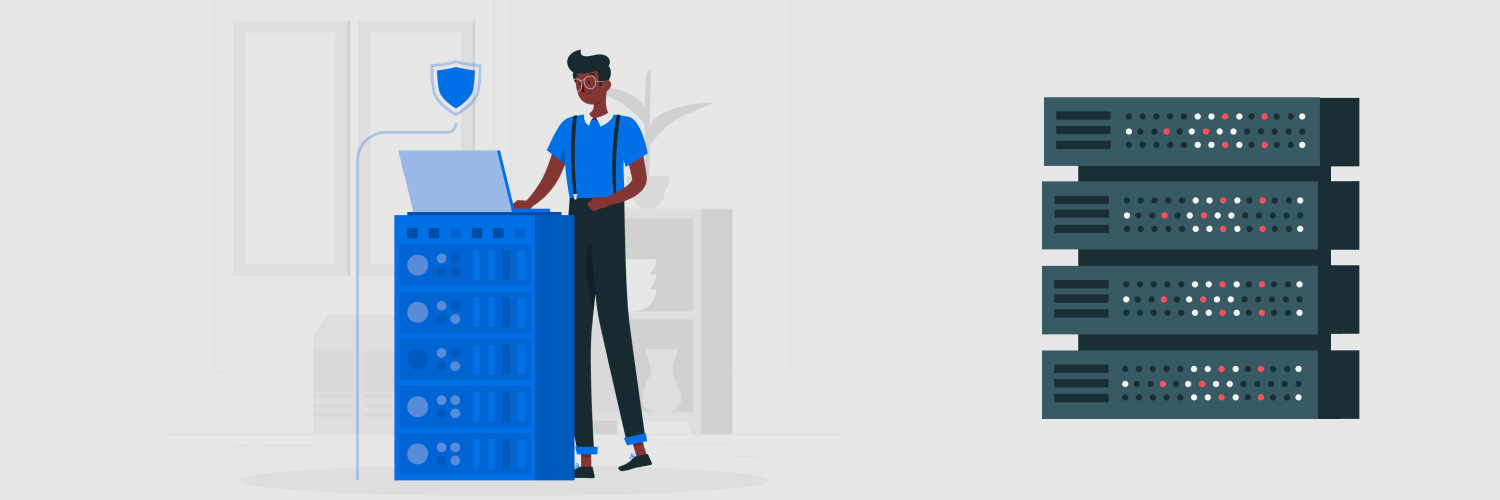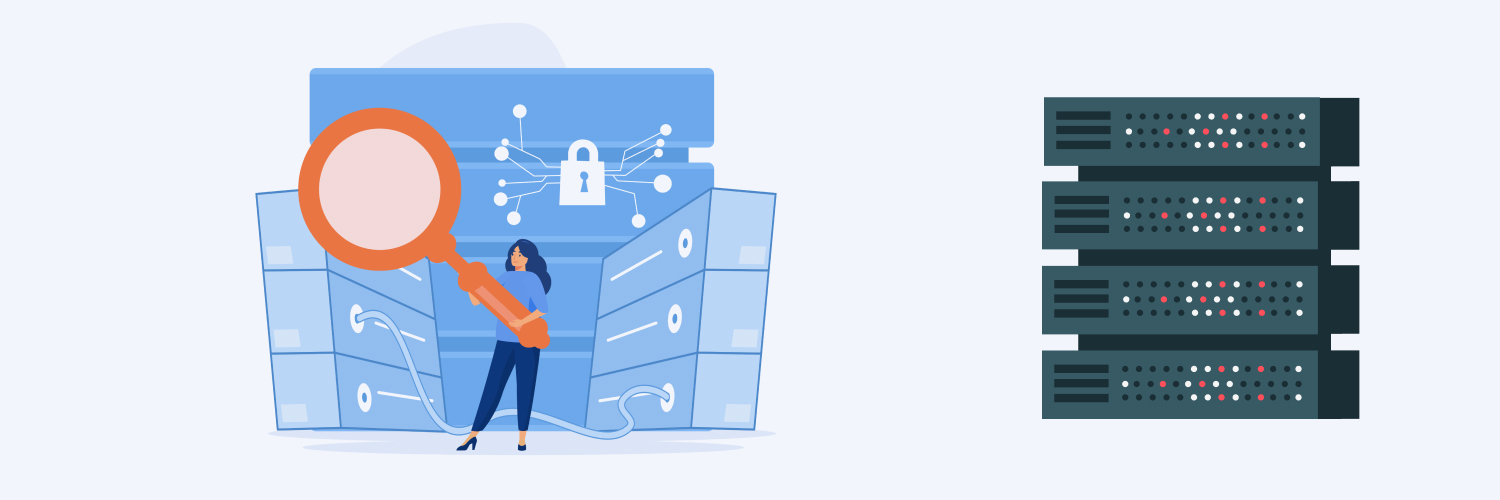What Is A Proxy for Chrome & How To Use Proxies In Chrome
Believe it or not, proxies are one of the best utilities for using the Internet. If you believe in free access to everything on the internet, you would want to use proxies on your machine. You can also use a proxy for Chrome, the most popular browser.
So in this post, we will discuss the many use cases of proxies, the different types of proxies for Chrome, and why you should opt for them in the first place. You’ll also learn how to use a proxy on Chrome.
If you know what proxies are but are still not sure why you need them, this guide will explain why. Who knows, it could be the next thing that takes your business to the next level.
You don’t just need proxies; you need good proxies, especially if your main goal is to boost your business’s SEO ranking. So make sure to read this guide through and through for important information you won’t find anywhere else.
What Is A Chrome Proxy?

The literal meaning of proxy is something that takes the place of something else. And that’s exactly what it does for your browser and device. It sends or shows its own IP address, which, in turn, hides your actual IP address and its corresponding location. This has many benefits, as you’ll learn later on.
Using a proxy can also speed up your connection depending on the type and location of the proxy. Some web pages may load faster with a proxy. They may even offer more robust security, but all of that depends on whether you have “good” proxies.
A Chrome proxy isn’t different from a proxy server, in general. A proxy is essentially an intermediary server between you and the server of the website you’re visiting. It hides your Internet Protocol (IP) address.
Chrome is the most widely used browser for a good reason. It’s one of the fastest and multi-operating-system-compatible. Most importantly, it offers a wide range of native and third-party add-ons (extensions) that increase its features. So it’s no surprise that it has over 2.65 billion users as of January 2020.
A proxy is also an add-on for Chrome that enables a buffer between Chrome and the server where the target website resides. So really, it’s not so different from any other proxy you may use for your business.
When you type a URL in the search box or click a link displayed on the search results page, a request goes from your computer, through the internet, and to the server where the website is. That server, in response, sends the website to your browser, where it’s displayed.
This request also carries the IP address for the device, which is unique for each device. This IP address can also reveal geolocation, i.e., it can tell precisely where the request originates.
When you use an anonymous proxy, Chrome routes the request through that proxy server. As a result, the website server doesn’t see the IP address of the device Chrome is on. Instead, it sees the IP address of the proxy server. In other words, proxy servers for Chrome act as intermediaries between Chrome and the Internet.
Why Use A Proxy For Chrome?

There are several reasons why you’d want to invest in proxies to browse the Internet with Chrome.
Hiding IP for web scraping
Of course, the main reason for using proxies is redirecting requests through another IP address and masking your own. For various reasons, you may not want to show the website’s server who you are and where you’re located.
One of the most common use cases of proxies is web scraping. Web scraping is the technique of traversing websites and collecting data from them in a usable format. Proxies prove invaluable for web data scraping, as you can scrape data using multiple IP addresses. The device remains the same, but the requests go through different IP servers. This essentially safeguards your device’s IP address and the proxy servers from getting banned or blocklisted.
If a web server identifies that a particular IP address is here for web scraping, it may block it from reaccessing the website. By using different IPs, you circumvent those blockers, appearing as traditional users just browsing the website.
Some of the common applications of web scraping are:
- Price tracking and comparison
- Ad verification
- Social tracking and listening
- SEO tracking
- Tailored marketing
Enhancing security
Using proxies to hide your IP address also hides it from cyber attackers. Without knowing the actual IP address of your device, it’s virtually impossible for hackers to infiltrate your internet connection and access the data on your computer.
So, in many cases, proxies help augment security by masking IP and location. In a way, they act like just another firewall. But that doesn’t mean you shouldn’t have other security measures in place to protect your device and all the data on it.
Improving speed
Proxy servers can become caching machines, improving the speeds of websites and content loading on your browser. For instance, the previously visited websites get cached on the proxy server, storing a web page copy. That way, when you visit the website once again, it loads with lightning-fast speed.
These basically eliminate the need to go through the main server again and again.
Changing location
Another great benefit of using proxies is that you can change your device location without moving physically. For instance, if you want to access a website from an IP address somewhere in Europe while you’re in the US, you can do so with the help of a Chrome proxy.
Simply, your request, originating from the US, will be rerouted through a server located in Europe. As a result, the webserver thinks the request originates within Europe. But why would you want to do that?
Well, many websites have different geolocation restrictions, which means the website is accessible from certain regions or locations only. The content that’s active in Europe may not be available in Asia or Africa. So by changing the IP address, you can access location-specific content. This is all the more relevant for streaming websites, where content is available based on copyrights for specific regions.
Types of Proxies

Now, there are several types of proxies available to use with Chrome browser. Considering the type of proxy is important because it can impact the performance of the proxy and why you’re using it.
Here are the main types of proxies:
- Residential proxies
- Data center proxies
- Semi-dedicated proxies
- Dedicated proxies
- Rotating proxies
Residential proxies
Residential proxies, also called residential IPs, are typically located in residences assigned by a local internet service provider (or ISP). These are real IP addresses with a location. This way, one can seamlessly use an IP address from another location, as if you’re present in the other.
The process is pretty much the same as with other proxies. The request reroutes through the device of the residential IP address.
Data center proxies
These proxies or IPs are based in a data center with many servers. As such, these are not linked with any ISP. Depending on the data center’s location, the IP address may or may not have a specific physical address. For those looking for bulk proxies for web scraping, data center IPs are a viable option.
Semi-dedicated proxies
Semi-dedicated proxies or shared proxies are IP addresses that different parties share. For a specific period that you’ve paid for, you’ll be able to use these IPs.
This obviously makes such proxies more economical, but it also leaves control in other people’s hands when not in use. You don’t own the proxy and may not be able to use it around the clock.
Dedicated proxies
As you can guess by the name, these proxies are dedicated to the buyer. Only you can use these proxies as well as the resources linked with them. For this reason, these are also the most expensive of all.
Rotating proxies
Rotating proxies aren’t a type of proxy, as residential, data center, or dedicated proxies can be rotating as well. These proxies basically follow an auto-rotating mechanism for routing requests.
For instance, you bought ten different proxies. Now, these proxies will use back-connecting to rotate after some time or a specific number of requests. The last proxy goes at the back of the stack, and another comes on top, which is then used for sending requests. There are numerous benefits to this approach, as we’ll discuss in a moment.
Which Type Of Proxy Is The Best For Chrome?

Before we get to using proxies, you should know how to choose the kind of proxy that works best for your unique needs.
Overall, residential proxies are the best regardless of the application you’re using them for. The biggest benefit of residential proxies is that these IP addresses are assigned to actual physical devices, and for the most part, they can avoid getting blocked. For Chrome, these are the best option as it appears as if the request is coming from a physical device located in a home. This makes the servers trust the request readily.
Keep in mind that residential proxies, while more secure and speedy, are expensive. However, for a casual user in need of just a couple of proxies, residential proxies are the best option.
Data center proxies, as mentioned before, are cheaper, and you can buy them in bulk. These are most favored for large-scale data scraping, as those scrapers may need hundreds of different IP addresses.
As for dedicated or semi-dedicated proxies, the dedicated ones are better and more secure. With shared proxies, you can’t control what someone else using the same IP address is doing. For instance, if another party gets the IP blocked from a website, that will impact you as well since you won’t be able to access that website.
Rotating proxies, especially rotating residential proxies, reduce the chances of blocking. Since the IP addresses keep swapping, the main server receiving those requests won’t find the activity suspicious or know that one party is making all these requests.
For occasional use of proxies, even static IP addresses are more than enough.
How To Set Up A Proxy On Chrome

If you’re wondering how to use a proxy in Chrome, you’ll be happy to know that the process is pretty straightforward. But before you can start setting up a proxy server, you first need to buy/rent one.
Buy proxies
You need to first buy a proxy from a proxy provider. Normally, proxy providers have multiple plans that you can choose from that may have different numbers and types of proxies.
Aside from the types described earlier, you should decide between HTML and SOCKS (secure sockets) proxies. HTML proxies are typically good at deciphering data and are the preferred choice when using proxies for changing the location. These are also a good choice for web scraping, especially large-scale operations.
If you’re using a proxy for different purposes and different kinds of websites, stick with HTTPS. On the other hand, if you’re considering buying a proxy for accessing streaming services from different locations, SOCKS proxy is better than HTTPS.
Once you’ve made a purchase, you’ll receive information about those proxies, along with the credentials to access them (username and password). Make sure you’ve also received the port number along with each proxy’s IP address.
Setting up a proxy for Chrome
The proxy settings in Chrome differ slightly depending on what operating system you’re using. We’ll cover the process for each below.
Again, for this to work, you’ll need the IP address and port number handy.
On Windows
- Launch the Chrome app on Windows and press the “Customize and control Chrome” button on the top right corner, represented by the three vertical dots.
- Select “Settings,” and a new tab for settings will open.
- On the left-hand side menu, click on “Advanced” then “System.”
- Click on “Open your computer’s proxy settings,” which will initiate the Network & Internet dialog box of Windows.
- Here uncheck “Automatically detect settings.”
- Under “Manual Proxy Server,” check the toggle “Use a proxy server.”
- Enter the IP address in the Address textbox and the port number in the Port text box.
- Click on Save.
You’ve successfully deployed the proxy server to be used on Chrome. On the Network & Internet Settings page, you’ll also see a box that lets you enter addresses you don’t want to use the proxy server for.
If there are any servers you want to send requests directly to without the proxy server, you can indicate there.
On Mac
Applying an anonymous proxy Chrome on Mac isn’t that different from Windows, except for a few initial steps.
- Open the Chrome app on your Mac device and click on “Preferences” from the top menu.
- On the left-hand side menu, click on “Advanced” then “System.”
- Click on “Open your computer’s proxy settings.”
- On the proxy tab, click on the box next to the proxy you want to set up: “Select a proxy to configure.”
- Now, enter the IP address and port number in the appropriate text boxes.
- You’ll be prompted to enter the credentials your proxy provider gave you.
- Enter the credentials, click “Okay” and “Apply.”
You’re good to go about browsing the Internet and doing whatever you want using the proxy server.
To ensure that the proxy was configured correctly, you can check your IP address. Just go to whatismyipaddress.com and see if the IP address changed successfully. If your actual IP address appears, the proxy server wasn’t set up correctly or is not working properly.
Using Chrome proxy add-ons
As you can see, applying a proxy server for Chrome is a manual process. This can be a nightmare when you have to switch between different proxies frequently. Unlike web scraper tools, Chrome itself does not switch between different IP addresses, and you have to repeat the above steps if you want to change it.
To address this issue, you can install a proxy switcher or manager add-on/extension to Chrome. These extensions help you manage and switch between different proxy servers seamlessly right there from the menu above.
Chrome extensions usually provide easy customization, which is what proxy manager extensions offer as well. The most popular extensions for effortlessly managing proxy settings in Chrome are Proxy SwitchyOmega and Proxy Switcher and Manager.
You can set up multiple proxies on these add-ons and switch between them while browsing. The setup process may vary for each, but you only have to do it once, unlike doing it manually.
How to disable a proxy server in Chrome?
What if you don’t want to use the proxy server? You can simply disable it through the same settings you used to set them up in the first place.
To disable proxy server on Windows, follow these steps:
- Launch the Chrome app on Windows and press the “Customize and control Chrome” button on the top right corner, represented by the three vertical dots.
- Select “Settings,” and a new tab for settings will open.
- On the left-hand side menu, click on “Advanced” then “System.”
- Click on “Open your computer’s proxy settings,” which will initiate the Network & Internet dialog box of Windows.
- Toggle off “Use a proxy server.”
- Click “Save.”
To disable proxy server on Mac, follow these steps:
- Open the Chrome app on your Mac device and click on “Preferences” from the top menu.
- On the left-hand side menu, click on “Advanced” then “System.”
- Click on “Open your computer’s proxy settings.”
- In the box where you’ve configured the proxy, simply uncheck the appropriate proxy you want to disable. For example, HTTP proxy.
- Click “Save.”
There you go. Now your browsing activities will originate from your device’s actual IP address. You can again use whatismyipaddress.com to check whether you have successfully disabled it.
Proxies vs. VPN For Chrome

If you search for “proxy for Chrome” on any search engine, you’ll also see a list for VPNs (virtual private networks) as well. You can use a VPN app as well as VPN extensions for Chrome.
But what is the difference between the two?
Well, VPNs also rely on proxies for masking the IP address of your device on Chrome. So even if you choose to go with a VPN, you’re essentially changing your IP address. The VPN creates a private, anonymous connection with the web servers by rerouting the request through multiple servers.
A proxy also reroutes your request but through the specific proxy server that you’ve set up manually. The requests will go through this specific server, and the receiving server where the website is located will see this IP address.
Another difference between using a proxy and a VPN is that the latter hides and encrypts all kinds of requests initiated from Chrome. A proxy server may mask the IP addresses for the specific requests it’s set up for, like HTTP or SOCKS.
You hardly have the freedom to choose the IP address with VPNs, as most apps and extensions assign your device an IP address automatically. This is all the more problematic with free VPNs that often don’t give any choice whatsoever. So you’re limited to the location of the IP address/proxy it has assigned.
For instance, on activating a VPN, you may be assigned a Singapore-based proxy, even if you wanted one based in Europe. All the content you’ll access now would be for the Singaporean or perhaps Asian-Pacific regions.
Therefore, there’s not much autonomy with free VPNs as you would have with a proxy you have bought. Also, most free VPNs are easily blocked by streaming websites as they have sophisticated protocols in place to detect that a VPN is on. That beats the purpose of using it in the first place.
The story is different when it comes to paid VPN as those have more features and offer autonomy. Nevertheless, for some applications buying and setting proxies is a much more viable option. For web scraping, in particular, using proxies is the best bet to avoiding blocks both temporary and permanent.
Things To Consider When Buying Proxies For Chrome

By now, you’re probably convinced that buying a proxy for Chrome and Chrome proxy extension is the right way to go. With so many providers on the market, it can be confusing to pick one. After all, browsing anonymously, safely, and speedily depends on a quality proxy.
Purpose
First off, you need to decide what is your purpose for using a proxy in the first place. Casual users, small businesses, and enterprises may need to use proxies for different purposes.
For instance, a regular user may want to use a proxy for an added layer of privacy. More commonly, people use proxies to bypass the geolocation barriers of certain websites, especially those providing content, like streaming services for streaming TV shows, movies, or sports events.
For business users, proxies serve the all-too-important purpose of masking IP addresses during web scraping. Consider an e-commerce store that sells common goods like apparel, shoes, or electronics. They may need to keep track of the prices of their competitors. Often, the decision comes down to pricing for customers, so businesses need to be aware of the prices on competitor websites.
Checking and tracking prices manually for dozens or even hundreds of competitors can be laborious. A web scraper, on the other hand, can do this task in minutes. However, websites also have blocking protocols in place, such as request limits (how many requests can come from a single IP address in a given time).
This is where rotating proxies may come in handy for such a business by consistently changing IP addresses. That way, those IP addresses don’t reach the rate limit and keep scraping data without getting blocked.
Type
Consider this an extension of the above section, as your purpose will also guide the type of proxies you should go for.
First of all, stay far away from public proxies as they have serious vulnerabilities that can compromise your entire system. So you must either go with semi-dedicated or dedicated proxies.
Other than that, you have to choose between residential or data center proxies. Residential proxies are hands down the best regardless of the purpose. They are the lowest risk and most efficient, but they are also costly.
If you’re buying for web scraping, rotating IPs are also a good choice. You can even work with a smaller proxy pool as the proxies are repeatedly rotated, avoiding reaching request limits for different websites.
Number of proxies
The next thing to determine is how many proxies you need. Again, this depends on your use case. Web scraping applications typically require a large number of proxies or proxy pools. For small businesses and individuals, a handful of IPs are more than enough.
There’s no magic formula as such to determine the right number of proxies you need, but these guidelines should help to some extent. Also, the good thing is that you can always buy more IPs as and when needed.
Location
Proxies are limited by their location, so choose the location wisely. If you want to access the Internet from several different locations, you will need to buy a proxy or multiple proxies for Chrome for all these locations.
Generally, buying one from each region gets the job done. For instance, an IP address from the US will usually give you easy access to Canadian or Mexican content. Similarly, to access European websites, a proxy located anywhere within the EU should suffice.
Budget
Lastly, you should keep in mind how much you’re willing to pay for Chrome web proxy servers. The rates vary by type and provider. For most personal users, the rates are pretty affordable. Businesses and enterprises buying proxy pools for Chrome can benefit from bulk prices for hundreds of IP addresses.
Make sure to pay attention to which requests (HTTP or SOCKS) are covered. The rate is monthly, so do your calculation accordingly. Also, make sure you read the cancelation and refund policy, so you have the freedom to cancel the subscription whenever you want.
Final Thoughts: The Best Proxies For Chrome

Rayobyte provides the best proxies for Chrome with flexible and affordable plans. No matter what your user profile is, there’s something for everyone. The plans are designed for individuals, small businesses, corporations, and even enterprises who get custom plans according to their needs.
You can easily choose between dedicated, semi-dedicated, rotating, and residential (ISP) proxies. You can also choose the exact number you need based on your needs.
The final monthly rate is calculated per IP address. While most are IPv4 IPs, you can get the latest IPv6 addresses if you decide to go with dedicated IPs. These IPs are spread over seven different ASN (autonomous number systems) and come from 27 Countries.
The speed provided is a whopping 1 Gbps, so you get the conventional benefits of using proxies and a boost in the loading speed. Compared to many other mainstream proxy providers, Rayobyte provides the most diverse pool of proxies at the most competitive prices.
So whether you’re a football fan wanting to stream European Football League matches or a retailer keeping an eye on the competitors, Rayobyte’s rotational and residential proxies are the way to go. Unlike VPNs, you have control in your hand and only need to set up a Chrome web proxy server once.
If you choose to subscribe for a longer term, the prices get even cheaper. What else could you ask for?
Frequently Asked Questions
What is a proxy server?
A proxy server is a server that routes traffic within a network (for example, the Internet). It’s a middle man between the device or server sending the request and the device or server receiving the request. A proxy may be a device like a computer or a server.
Today’s proxy servers do much more than just routing requests. They can also encrypt data transfers or cache data to improve loading speeds. So in a way, it can also be considered a security measure to protect the communication between devices and servers.
Can you use a proxy on Chrome?
Yes, you can use a proxy on Chrome. Chrome has a built-in feature to apply and change proxies, so all the requests you make with the browser are routed through that proxy. By default, Chrome uses your native IP address, but it can change the IP address with the help of a proxy.
Where do I change proxies on Chrome?
Chrome proxy settings are located in the Advanced settings of Chrome. Just go to Settings > Advanced to find proxy settings. You can change settings by clicking on “Open your computer’s proxy settings.”
Chrome essentially relies on the operating system’s proxy settings. The exact steps vary depending on the OS you’re using. You can also change proxies manually or with the help of a Chrome proxy extension.
Can you use Chrome for web scraping?
While there are standalone software tools for web scraping, you can also use Chrome for this purpose. For this, you’ll need a web scraping extension for your Chrome browser.
You can download one of the popular web scraping extensions for Chrome and start scraping websites for data. The exact mechanism may vary by the extension, and the use of proxies is advised.
There may be limitations to using a Chrome browser for web scraping, so dedicated software is a better choice for enterprise-scale web scraping. You can use many web scraper bots in conjunction with proxy pools to scrape thousands of websites in a single day.
Is it safe to use a proxy?
Yes, generally, proxies are safe to use. In fact, using a proxy may improve web security as it may also encrypt data and hide your IP address from cybercriminals.
However, stay clear of public proxies as they can be accessed by anyone quite easily. While they may change your location for browsing, they won’t secure the data transfer or mask your device’s IP address.
Go for residential IPs if you want the safest IP address. They usually have the lowest risk of getting blocked, but these are static IPs with a fixed geographical location and address.
Can you use multiple proxies on Chrome?
Chrome will use only one proxy at a time, but you can use multiple proxies by changing the proxy settings and adding the corresponding IP address and port number. For more convenience, it’s best to use a Chrome proxy manager extension that can help switch between different proxies more easily and quickly.
Is a VPN also a proxy server?
A Virtual Private Network or VPN is similar to a proxy server. In fact, VPN applications and extensions also use proxy servers for rerouting traffic. The only difference is those proxy servers may have a specific IP address, whereas VPNs may use a different IP address every time.
Also, VPNs route all the data from proxies. So all applications essentially use it when connecting with the Internet. With proxies, you can also limit which websites or applications send requests through the proxy servers and which ones don’t.
Are residential proxies better?
Residential proxies, also called ISP proxies, represent physical devices with IP addresses assigned by an ISP. These are static IP addresses that are often used to circumvent geolocation restrictions.
As residential proxies are authentic, these are more secure and reliable than, say, data center IPs. However, these are not as dynamic, so you have to stay wary of rate limits when scraping data off websites.
What is the difference between HTTP and SOCK proxies?
When you’re buying and configuring proxies for the web, you’ll come across two types of proxies: HTTP and SOCK. HTTP proxies route an HTTP connection between client and server. It can only handle HTTP requests.
SOCK or SOCKet Secure proxies handle SOCK requests, which is another type of internet protocol. SOCK protocol is better suited for heavy traffic communication, like peer-to-peer (P2P) or streaming traffic.
The main difference between using SOCK and HTTP proxies is that the former cannot interpret web data. The HTTP protocol, on the other hand, can interpret different kinds of web data. So it’s more useful for browsing the web.
For web scraping, HTTP proxies are best as they can understand data well, and that’s a major chunk of the job. SOCK proxies are best for applications where firewalls are involved. An HTTP connection may be restricted because of a firewall, which SOCK can easily bypass.
How do I find what proxy I am using on Windows?
You can easily check what proxy you’re using through the Control Panel on Windows. In the search bar, type “Internet Options” and press enter.
Select the “Connections” tab and click on “LAN Settings.” Now you’ll see the Proxy Server section at the bottom. If it’s checked, you’ll see the IP address and port number as well. This is the proxy (IP address) you’re using on your PC.
If this box is unchecked, that means you’re not using a proxy server, and your actual IP address is being used for sending requests on the Internet. That means the web server will know your location and other information that your IP address provides.
The information contained within this article, including information posted by official staff, guest-submitted material, message board postings, or other third-party material is presented solely for the purposes of education and furtherance of the knowledge of the reader. All trademarks used in this publication are hereby acknowledged as the property of their respective owners.





